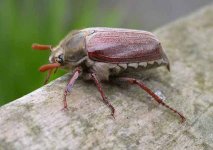CJW
Hit-and-run WUM
I spent last night huddled around my moth trap in Ballaugh Curraghs (one of northern Britain's premier moth sites) from 9pm to 11.30pm and caught two moths (a Flame carpet and a bedraggled Puss Moth)!! Alright, I actually went to the pub for a couple of hours whilst I let the catch "build up", but I don't think I missed anything.
These last couple of years seem to have been really poor in terms of species caught and the number of individual insects. My trap at home tells the same story with only a couple of species being caught in recent weeks. What's going on?
These last couple of years seem to have been really poor in terms of species caught and the number of individual insects. My trap at home tells the same story with only a couple of species being caught in recent weeks. What's going on?






